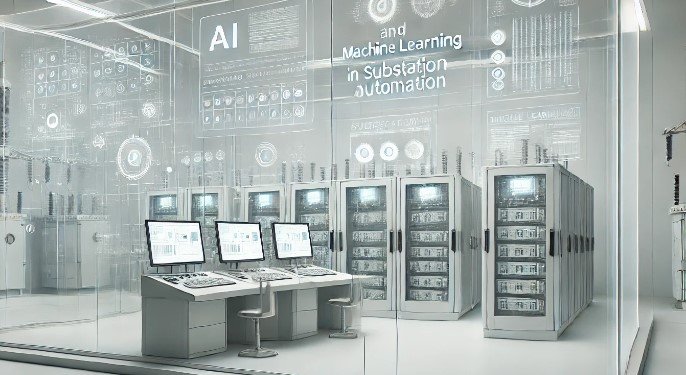
AI and Machine Learning in Relay Protection
Artificial Intelligence (AI) and Machine Learning (ML) are two powerful technologies that have been rapidly advancing in various industries, including electrical power systems. In relay protection, AI and ML techniques are gaining traction as tools to improve the reliability and efficiency of protective schemes within smart grids AI environments.
Relay protection is essential in an electrical network to detect and isolate faulty components, preventing system-wide failures. Traditionally, relay protection systems have been designed using deterministic algorithms based on predefined thresholds and rules. However, these approaches may struggle to adapt to the increasingly complex and dynamic nature of modern power systems, especially with the growing integration of renewable energy sources. Renewables introduce variability and uncertainty into grid operations, requiring relay settings to be more nimble and adaptable to fluctuating conditions, rather than relying on static settings that may not account for all possible scenarios. Adaptive protection AI is therefore becoming crucial for modern grids, as it enables protective systems to dynamically adjust based on real-time grid conditions, ensuring optimal protection even as grid dynamics evolve.
This is where AI and ML come in. By leveraging the capabilities of these technologies, relay protection systems can become smarter, more adaptive, and self-learning. With AI, protection schemes can learn from vast amounts of historical and real-time data, enabling more accurate fault detection and classification. ML algorithms can identify patterns and trends from this data, allowing for early fault detection and prediction, which in turn helps in taking proactive measures to prevent catastrophic system failures.
Applications of AI and ML in Relay Protection
1. Fault Classification
AI and ML can analyze fault records and historical data to offer insights and recommendations that enhance the overall protection system’s performance. However, the relay, based on its pre-programmed settings, remains solely responsible for making the fast, real-time tripping decision to clear the fault within milliseconds.
2. Fault Prediction
Another vital application of AI and ML in relay protection is fault prediction. By analyzing historical data and system parameters, ML models can identify patterns and trends that indicate the likelihood of a fault occurrence. This predictive capability allows operators to take preventive measures, such as scheduling maintenance or implementing system modifications, to avoid potential faults.
3. Relay Coordination Automation
Relay coordination is another area where AI and ML can offer significant benefits. Traditional coordination schemes require extensive manual analysis and tedious adjustments to ensure appropriate relay discrimination. However, AI and ML could complement traditional software tools by analyzing fault records, historical data, and evolving system conditions to recommend improvements to relay coordination settings. While relay coordination automation is typically handled by tools like ETAP, AI/ML can provide dynamic, data-driven insights for longer-term system optimization. This results in improved selectivity and coordination between relays, reducing outage times and minimizing operational costs.
Revised Practical Example of AI/ML in Relay Protection
Let’s consider a more realistic practical example of AI/ML enhancing relay protection:
Assume a transmission line is protected by distance relays and current differential relays. Using historical fault data and system parameters, an ML model is trained to optimize the relay’s zone settings to account for varying system conditions (e.g., fluctuating load, generation dispatch). When a fault occurs, the relay measures the impedance and compares it to the optimized zone settings refined by ML over time. This ensures that the relay operates with updated settings to adapt to changing conditions, but the relay still makes the real-time tripping decision independently, in line with deterministic protection standards that ensure fault clearance within milliseconds. 1 2
Practical Considerations for AI/ML in Relay Protection
While smart grids AI and adaptive protection AI bring significant advantages, there are challenges to their implementation in real-world relay protection:
- Data Requirements: AI/ML models require vast amounts of data to be effective, and since real faults are relatively rare, this can limit the training dataset.
- Cybersecurity Risks: As critical infrastructures, electrical grids must remain secure. Integrating AI/ML introduces potential cybersecurity vulnerabilities that must be carefully managed.
- Compliance with Standards: Any AI/ML integration must comply with industry standards, such as IEC 61850 for substation automation and IEEE C37.118 for synchrophasors, ensuring reliability and compatibility with existing grid infrastructure.
Conclusion
AI and ML technologies are revolutionizing relay protection in electrical power systems. With their ability to process large amounts of data and learn from it, these technologies improve fault detection, fault classification, fault prediction, and relay coordination. However, real-time protection still relies on deterministic algorithms due to the stringent time constraints in high-voltage transmission systems. AI/ML excels in optimizing protection settings, fault prediction, and improving overall system reliability in smart grids AI environments.
Essence: Adaptive protection AI in relay protection offers promise in optimizing protection settings and fault prediction, but real-time application remains limited due to processing speed constraints and integration challenges with existing deterministic systems.
1- (https://www.intelligent-power-today.com/protective-relays/differential-protection-relays/machine-learning-applications-in-differential-relay-protection)
2- (https://www.intelligent-power-today.com/protective-relays/distance-protection-relays/artificial-intelligence-and-distance-protection)